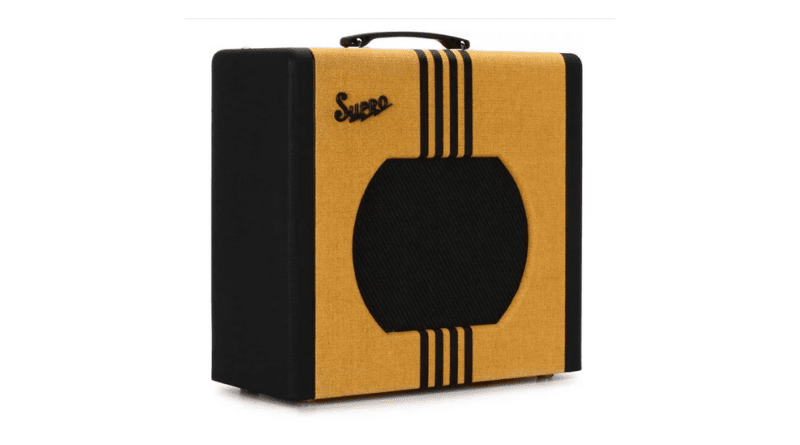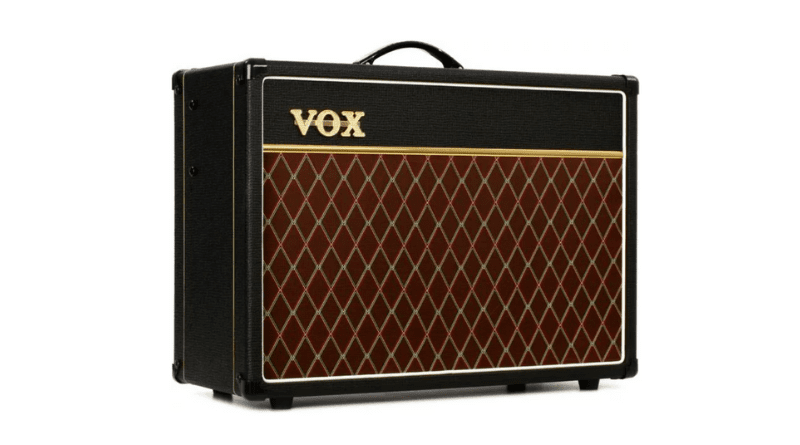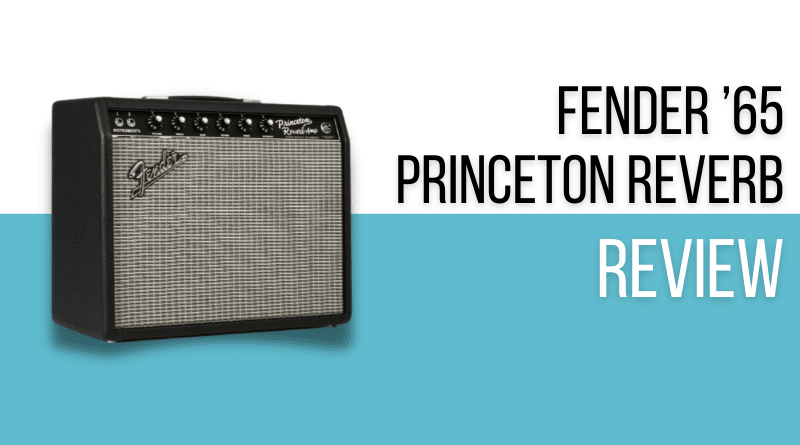In this KillerGuitarRigs Guide, we’ll be taking a look at one of the most popular combo amps in history – the Fender ’65 Princeton Reverb. Confusingly enough, the Princeton actually launched in 1964, but incredibly, it’s remained in continuous production ever since.
It started life as an amp aimed primarily at beginners and guitar students, but as professional musicians and studios figured out just how good it was, it became a staple on stages and in recording facilities around the world.
We’ve all heard of the Princeton ’65 Reverb, but will it live up to the hype or will it just be another case of nostalgia getting in the way of progress? Keep reading as we find out.
Read more about our review process.
Contents
Who Is This For?
The Fender ’65 Princeton Reverb is technically designed as a beginner’s amp. Of course, the modern-era price tag does put it out of reach for the average beginner, but it nonetheless retains the same, simple layout that makes it ideal for those learning the craft. Intermediate to advanced players looking for a great recording amp will find that this model is a great choice, and in particular, brings out the best from telecasters.
Appearance / Features / Controls
There’s something pretty special about the look of a Fender amplifier. Clean lines and simplicity are the order of the day. There are no complex controls, just a very simple black-face panel with the classic silver grille cloth. We found that it was very well put together. The switchgear was smooth and the Tolex was well applied. We tested the standard black finish, but it’s also available with a beautiful lacquered tweed cover and brown grille cloth. If you opt for the tweed, you’ll get a 1×12” speaker, rather than the 1×10” we got on our black model.
The cabinet is solidly built. It’s made from particleboard, which at the price point, some might find a little disappointing. But having had our hands on plywood cabinets in the past, we couldn’t pick up any discernible difference in tone. It had an advertised weight of 34 pounds, but our test model weighed in at a hair over 35. It’s not a lightweight amp, but it’s still portable regardless.
It features 2 channels and has controls for volume, treble, and bass on the EQ side. We would have liked to have seen a middle frequency dial, but that can still be manipulated with a pre-amp pedal if you desperately need such control.
The Reverb section has dials for reverb, speed, and intensity. The reverb control impacts the level of reverb that makes it into the output. The speed dial controls the modulation speed of the vibrato effect that can be activated from the foot pedal, and intensity will alter the depth of the vibrato.
Performance/Sound
There’s a good reason why the ’65 Princeton Reverb is one of the most widely-used studio recording amps in the world. They are famous for their clean tones and we were not disappointed at all. When we kept the volume at practice/recording levels, we got some of the most exceptional, chiming Fender tones. The sound was rich and sweet, with minimal effort required to balance the EQ.
It’s a 12-watt amp and is loaded with a single Jensen 10” Special Design C-10R. This is the same speaker that powered the original Princeton and we found that this vintage reissue, sounded to the casual observer borderline identical to the models of the 1960s. The speaker choice is a large part of the classic, clean Fender sound. The Jensen C-10R delivers those cleans well, yet handles breakup brilliantly when the amp gets pushed.
Speaking of pushing the amp, after we’d let the tubes warm up (3 x 12AX7s, 1 x 12AT7, 2 x 6V6s, and 1 x 5AR4 rectifier tube), we let her stretch her legs and pushed the volume all the way. For being only 12 watts, this amp moved huge volumes of air. It was incredibly loud in our relatively small space, but the sound was still ear-pleasing. The breakup was gnarly and gritty, and best of all, easy to control.
One of the things that made these amps so popular is the fact that they can be hot-rodded pretty easily. The cab will happily accept 12” speakers if you’re wanting to upgrade, and a lot of companies sell circuitry upgrade kits.
The onboard long-spring reverb was pretty magical. It was organic sounding and while it doesn’t have the range of a modern digital reverb pedal or plug-in, it still gets our vote. We found it ear-pleasing and complementary of the tones. It didn’t try to steal the show from the tubes, but it came pretty close.
Other Guitars to Consider
If for some reason the Fender ’65 Princeton Reverb isn’t quite what you’re looking for, you might see something you like amongst these alternatives
Supro Delta King

The Supro Delta King (full review here) is about as vintage as it gets, looks-wise. It’s got 15 watts of tube power driving a single 12” speaker. Like the Fender, it has a simple set of controls, but it does include 3-band EQ. So if having mid controls is a deal breaker, this is a great option. It has separate input and master volume, allowing for lots of tube breakup at practice volumes, another great pro in favor of this Supro. When it’s time to rip, there’s also a Pigtronix FAT high-gain mode, which nets you full saturation in a hurry.
Vox AC15C1

If you’re looking for something similar to the Fender ’65 Princeton Reverb, but you feel like you’d rather have a more British voicing, it doesn’t get much better than a Vox AC15C1. This is another 15-watt 1×12” tube driven combo, and while it’s a quintessentially British amp, it’s still got more chime than something like a Marshall. Like the Fender, the AC15 has masses of grit when you open the taps, and yet remains easy to control, making it another popular choice for recording artists and studios.
Final Thoughts:
It’s hard not to like the Fender ’65 Princeton Reverb. We’re big fans of profilers here at KGR and we’ve frequently used profiles of this amp, but having one in person really adds to the overall experience. It’s not something that’s going to be perfect for all genres, but as a jack of all trades, the Princeton will have a go at just about anything and sound great in the process.
The ease of control was a particularly strong point. If we wanted cleans, we found them easily. When we wanted grit, we didn’t have to go searching for it. This is exactly why it’s remained popular for over 7 decades.
So if you’re looking for the ultimate practice combo or an extremely reliable recording amp, you should be giving serious consideration to the Princeton ’65.
Check out these other articles you might like:


